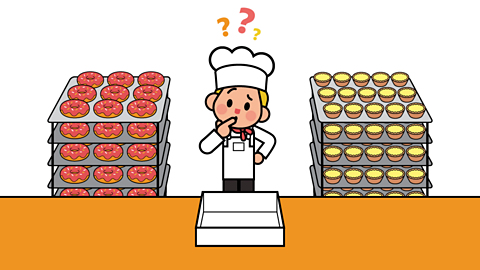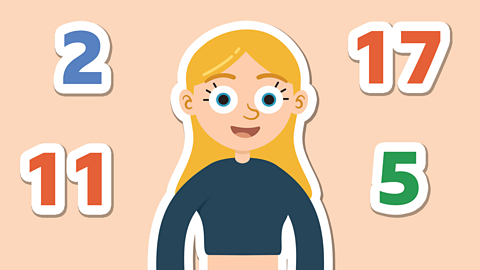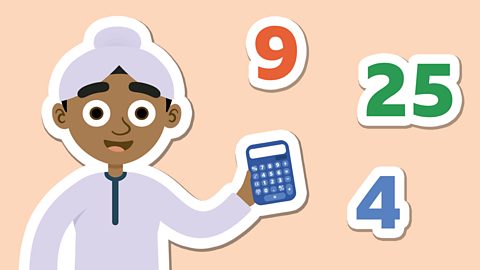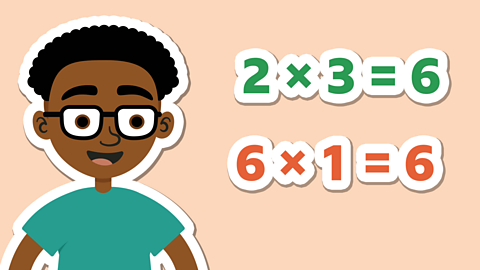What are common factors?

Factors are numbers that divide exactly into a number. They are the multiplication “facts” of the number.
A common factor is a factor that is shared by two or more numbers.
The number 1 will be a common factor for every single number!

Watch: Common factors
Watch this video for an introduction to common factors with Mr McPartlin.
Watch: Find common factors with arrays
Watch this video for a quick guide on how to find common factors using arrays.
Find out how to work out the common factors of two numbers using eggs!
Using an ordered method
To find common factors without using arrays, you can use a systematic approach (an ordered method).
Example 1
Bob the Baker has made a batch of 9 doughnuts and 15 custard tarts. He wants to divide them up and put them in boxes. One box is able to hold the same number of doughnuts as custard tarts. How many of each can one box hold?

This question is asking you to find the common factor of 9 and 15.
Let’s find all the factors of 9 and 15 and see which factor they share!
Factors of 9:
1, 3 and 9
Factors of 15:
1, 3, 5 and 15

3 is the common factor.
So Bob the Baker’s boxes can hold 3 donuts or custard tarts!

Example 2

What are the common factors for 16 and 48?
First, write down all the factors for both numbers.
Start at the number 1 and work your way up to 12. Ask yourself whether that number is divisible into the other number. Sometimes you will find numbers have factors greater than 12.
Factors of 16:
1, 2, 4, 8 and 16
Factors of 48:
1, 2, 3, 4, 6, 8, 12 and 16
Now, see which factors both 16 and 48 have.
Common factors of 16 and 48 are 1, 2, 4, 8 and 16.

What is a prime factor?
A prime factor is a factor which is also a prime number. Remember, 1 is not a prime number.
Example 3
Can you find all the common prime factors for 42 and 56?
First, find all the factors for 42 and 56.
Factors of 42:
1, 2, 3, 6, 7, 14 and 21.
Factors of 56:
1, 2, 4, 7, 8, 14 and 28.
Now you can see all of the common factors:
1, 2, 7 and 14.
But which of these numbers are prime numbers?
2 and 7, because they only have themselves and 1 as factors.
Activity
Play our fun maths game Guardians: Defenders of Mathematica. gamePlay our fun maths game Guardians: Defenders of Mathematica
Use your times tables and more maths skills to defeat monsters and reclaim the Kingdom of Mathematica

More on Year 5 Factors, multiples and primes
Find out more by working through a topic
- count3 of 4

- count4 of 4

- count1 of 4
